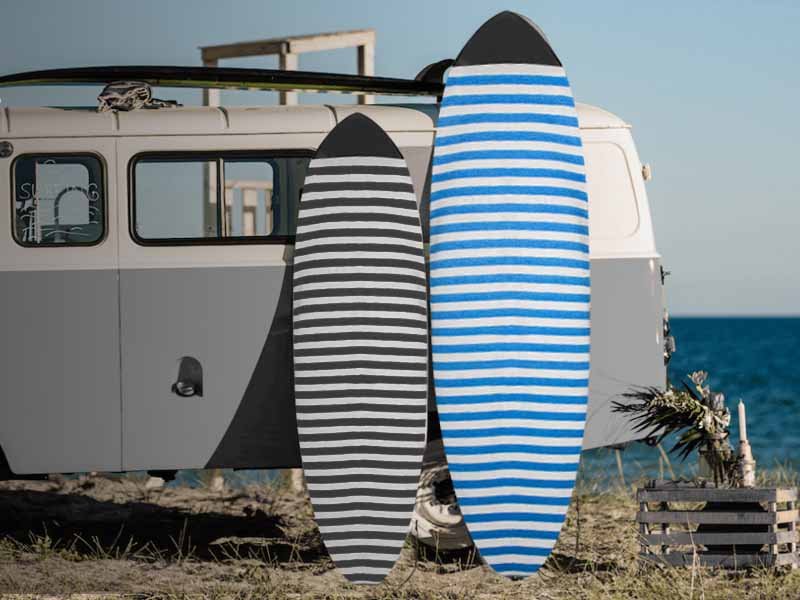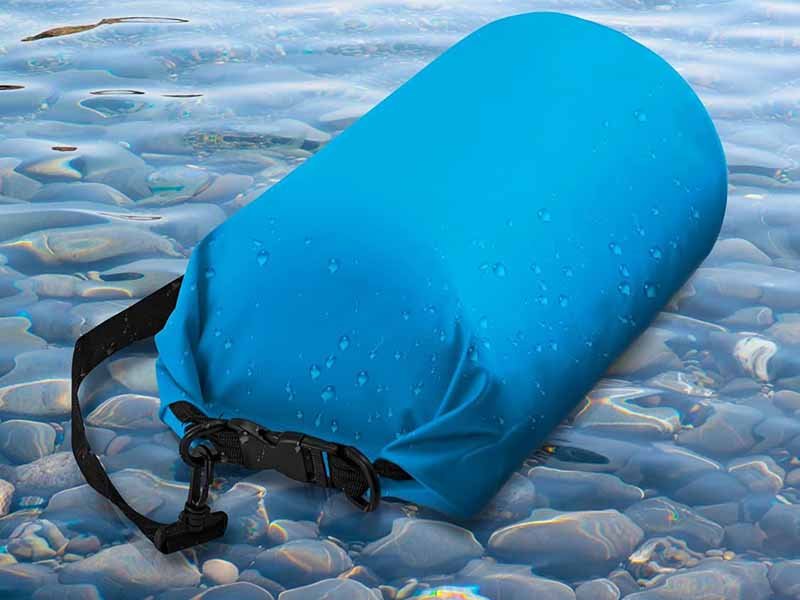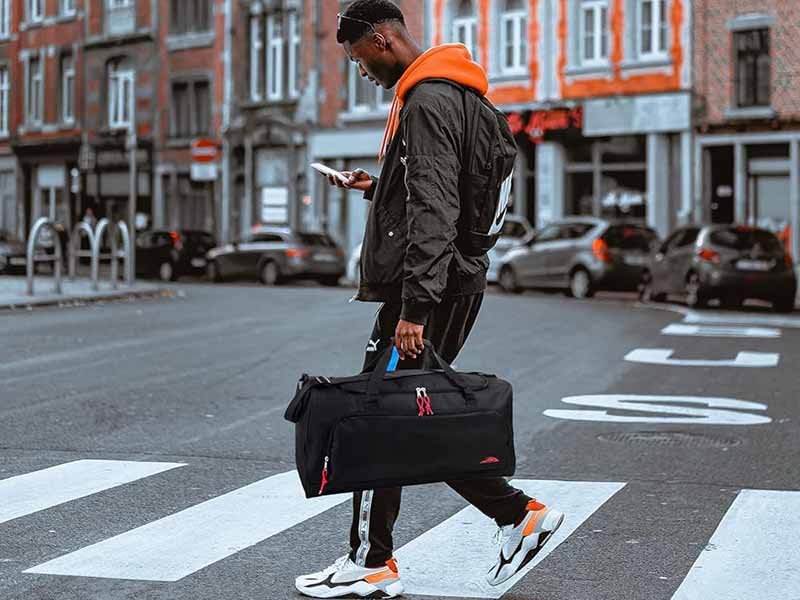A makeup pouch isn’t just a container—it’s a mobile vanity that safeguards your beauty essentials and reflects your personal style. Whether you’re a globetrotting influencer or a desk-bound professional, choosing the right pouch keeps your lipstick from melting, your brushes from fraying, and your daily routine running smoothly.
The best makeup pouch combines durable, water-resistant fabric (such as high-denier polyester or vegan leather), thoughtful internal compartments, secure closures (metal zippers or magnetic snaps), and a size that suits your needs—travel (TSA-approved) or everyday. Personally testing 12 pouch styles, I found that those with coated fabrics and modular inserts protected brushes and powders best, while clear TSA pouches sped up airport security without sacrificing style.
When my favorite pouch failed mid-flight—spilling mascara all over my carry-on—I realized it was time for a professional deep dive into materials, design, and care. Let’s explore what makes a makeup pouch truly exceptional, and how you can partner with Szoneier to craft your own private-label solution.
What Key Features Define an Ideal Makeup Pouch?

An ideal makeup pouch combines a water-resistant, easy-clean exterior with a wipe-clean interior, multiple compartments for brushes and cosmetics, sturdy seams, and a secure closure (e.g., YKK zipper). It balances compact size with sufficient volume for essentials, features reinforced hardware, and offers ergonomic touches—like a wrist strap or hanging loop. Quality materials and thoughtful organization keep makeup safe from spills, extend product life, and enhance user convenience.
When designing or selecting a makeup pouch that truly stands out, several core features must work in harmony:
1. Protective Exterior & Interior Linings
The outer fabric is your first defense against spills and stains. High-denier polyester or nylon (600D–1000D) coated in polyurethane (PU) or thermoplastic polyurethane (TPU) creates a waterproof shell that beads liquid rather than absorbing it. This allows quick wipe-downs with a damp cloth. Inside, a smooth, wipe-clean liner—silicone, PU leather, or laminated cotton—protects the fabric underneath and prevents makeup residue from seeping through. A wipe-clean interior ensures that brushes and palettes can be rinsed out on the go, keeping the pouch hygienic.
2. Thoughtful Organization & Modularity
A jumbled jumble of lipsticks and powders can spell disaster. Look for pouches with dedicated brush loops, zippered mesh pockets for small items (eyeliner pencils, cotton buds), and modular insert panels. Some designs offer removable divider trays or hook-and-loop partitions, letting users configure the interior to their daily kit—whether it’s five makeup brushes or ten mini skincare bottles. This flexibility not only keeps products secure but also helps busy users find what they need in seconds, reducing frustration.
3. Durable Construction & Hardware
Stitching quality is critical: seams should be double-stitched or reinforced with bartacks at stress points to prevent splitting under loaded conditions. YKK or SBS zippers with metal or robust plastic teeth resist jamming under powder dust. Smooth-glide sliders—preferably two-way—allow opening from either side, which is invaluable when rummaging in a crowded tote. Reinforced zipper ends and protective flap extensions further safeguard against accidental openings.
4. Size, Portability & Ergonomics
An ideal pouch is neither too bulky nor too tiny. Dimensions around 20–25 cm wide, 10–15 cm high, and 5–8 cm deep offer ample space for daily essentials without overwhelming a handbag. Features like a detachable wrist strap or fold-out hanging hook enhance portability—allowing the pouch to double as a travel hanging organizer or a clutch for quick outings. Lightweight fabrics and slim profiles ensure the pouch complements your lifestyle, whether it’s a daily commute or a weekend trip.
Which Materials Offer the Best Protection and Longevity?

Top-performing pouch materials include high-denier polyester with PU or TPU coatings for water and stain resistance; vegan PU leather for a luxury look that’s animal-friendly; silicone for seamless, easy-wash interiors; and laminated cotton for a balance of softness and durability. Each material caters to different price points and user preferences—so choose based on desired aesthetic, care regimen, and target market.
When designing makeup pouches that truly stand the test of time and meet diverse customer needs—material choice is paramount. Below, we explore the leading options, their performance metrics, and trade-offs:
1. High-Denier Coated Fabrics
- 600D–1000D Polyester or Nylon: These weaves combine high tensile strength with moderate weight. Higher denier counts equate to thicker yarns and tighter weaves, offering superior abrasion resistance.
- PU/TPU Coatings (10–30 µm): A polyurethane (PU) or thermoplastic polyurethane (TPU) lamination creates a waterproof barrier, preventing makeup spills and rain from penetrating. PU coatings adhere well to synthetic bases, while TPU adds elasticity—ensuring the fabric doesn’t crack under flex.
- Key Metrics: Abrasion resistance > 50,000 Martindale cycles; hydrostatic head > 1,500 mm (full waterproofing).
2. Vegan PU Leather
- Appearance & Feel: Mimics genuine leather grain with weighted hand (0.8–1.2 mm thickness). Ideal for fashion-forward lines seeking an animal-friendly label.
- Durability: Scratch resistance up to 500 Taber cycles; water-resistant surface that wipes clean—though repeated flex can cause minor cracking over 3–5 years without conditioning.
- Care: Wipe with damp cloth; occasional application of PU-safe conditioner restores suppleness.
3. Silicone & Thermoset Plastics
- Seamless Construction: Mold-in-place silicone pouches are fully monolithic—no seams—eliminating leakage paths and simplifying cleaning (dishwasher safe).
- Thermal Stability: Withstands temperatures from –20 °C to 200 °C, making them safe for sterilization.
- Limitations: Heavier (250–400 g) and lacks textile flexibility; best for niche, hygienic applications (medical makeup kits, children’s pouches).
4. Laminated Cotton/Canvas
- Soft Hand: Natural fabric feel enhanced with a thin water-resistant lamination (10–15 µm DWR).
- Breathability: Semi-permeable coating allows slight moisture exchange, reducing mildew risk inside.
- Durability: Moderate abrasion resistance (20,000 Martindale cycles) and water protection; suited for mid-range, lifestyle pouches with vibrant prints.
| Material | Water Resistance | Abrasion Resistance | Weight (empty) | Typical Uses |
|---|---|---|---|---|
| 600D–1000D Polyester | Hydrostatic 1,500 mm | >50,000 Martindale | 80–150 g | Travel pouches, corporate gifts |
| Vegan PU Leather | Surface wipeable | ~500 Taber cycles | 100–200 g | Fashion makeup clutches, VIP merch |
| Silicone | Fully waterproof | N/A (monolithic) | 250–400 g | Hospital kits, children’s cases |
| Laminated Cotton/Canvas | DWR coating | ~20,000 Martindale | 120–180 g | Printed lifestyle pouches |
What Is the Best Fabric for Makeup Pouches?
For overall performance: 1000D polyester with TPU lamination combines lightweight durability, full waterproofing, and print versatility—making it the top fabric choice for most private-label makeup pouches.
What Sizes and Internal Compartments Do You Need?

Makeup pouches range from compact “everyday” sizes (20×10×5 cm; ~1 L) for a few essentials, to mid-size kits (25×15×7 cm; ~2–2.5 L) for brushes and small bottles, up to full travel pouches (30×20×10 cm; ~6 L) that accommodate 100 mL bottles and TSA-approved liquids. Internally, pouches benefit from at least three zones,main compartment, brush/tool loops, and zippered mesh pockets,with optional modular dividers for ultimate organization.
Compact Everyday Pouches (1–1.5 L)
- Dimensions: ~20 cm wide × 10 cm high × 5 cm deep
- Capacity: Holds lipsticks, compact powder, a small brush, and keys.
- Compartments:
- Main Zone: Single open space for quick stow-and-go.
- Brush Loops: 2–3 elastic loops along the top edge to secure mascara or brow brushes.
- Flat Slip Pocket: For a compact mirror or spare cotton pads.
These pouches fit neatly into handbags or laptop bags, making them perfect for daily touch-ups. Their minimal design demands precise seam work and lightweight zippers, which Szoneier can customize to handle light daily use without adding bulk.
Mid-Size On-the-Go Kits (2–3 L)
- Dimensions: ~25 cm × 15 cm × 7 cm
- Capacity: Accommodates foundation bottles (30–50 mL), multiple brushes, and small skincare tubes.
- Compartments:
- Removable Liner or Tray: Vinyl- or PVC-coated insert that lifts out for cleaning.
- Mesh Zippered Pocket: Stores small accessories—bobby pins, hair ties, tweezers.
- Elastic Bands & Pen Slots: Secure eyeliners, brow pencils, and makeup brushes in upright position.
Mid-size kits bridge everyday and travel needs. Their structured form retains shape under moderate loads, and inserts protect interior fabrics from leaks. B2B brands can incorporate custom-printed liners or branded zipper pulls through Szoneier’s rapid sampling process.
Travel & TSA-Compliant Pouches (5–6 L)
- Dimensions: ≤30 cm × 20 cm × 10 cm to fit overheads and TSA bins
- Capacity: Up to eight 100 mL bottles plus brushes, tools, and mini palettes.
- Compartments:
- Bottle Sleeves: 4–6 clear, elasticized pockets holding 100 mL containers upright.
- Detachable Brush Roll: Roll-up flap with individual slots—prevents bristle deformation.
- Clear PVC Window: Allows quick security checks without unpacking.
- Large Mesh Divider: Separates wet items (e.g., sunscreen) from powders.
TSA regulations (“3-1-1 rule”) mandate one quart-sized, transparent re-sealable bag. Incorporating embossed logos on clear panels or custom color trims allows private-label differentiation. Szoneier’s manufacturing integrates clear TPU windows and durable, lockable zippers to meet airline standards and brand aesthetics.
Modular Multi-Pouch Systems
- Nested Pouches: A set of three sizes (everyday + mid + travel) that stack or nest, offering ultimate versatility.
- Interchangeable Dividers: Hook-and-loop panels let end users configure interiors on the fly—ideal for professionals who alternate between small shoots and on-location jobs.
How Do Different Closure Types Compare for Security and Access?
Zippers offer the most secure, leak-proof closure—ideal for liquids and powders—while magnetic snaps grant quick-access convenience for dry makeup. Drawstrings and buckles add stylistic flair but risk spills. Two-way zippers enable opening from either side, speeding item retrieval. The right closure balances security and usability based on pouch function—TSA-approved travel pouches need lockable zippers, while everyday pouches may favor magnetic or snap closures for speed.
- Zippers
- Metal YKK vs. Plastic Coil: YKK is more durable under makeup residue; coil zippers are lighter and quieter.
- Lockable Sliders: Small loops allow TSA-approved locks—essential for international travel kits.
- Two-Way Sliders: Faster access when pouch packed deep in a tote.
- Magnetic Snaps & Buttons
- Speed: Open in one motion; gentle on delicate fabrics.
- Security: Limited for liquids; best reserved for brush or jewelry pouches.
- Drawstrings & Toggles
- Adjustability: Accommodates varying contents.
- Spill Risk: Loose tops can allow contents to escape if inverted.
- Hook-and-Loop (Velcro)
- Convenience: Quick and silent.
- Wear: Velcro loses grip over time and attracts lint.
Which Makeup Pouch Styles Suit Travel vs. Everyday Use?
Everyday pouches are compact (20×10×5 cm) with quick-access closures, brush loops, and soft exteriors—perfect for daily touch-ups in handbags. Travel pouches (30×20×10 cm) feature larger capacities, lockable two-way zippers, clear TPU panels or TSA-compliant pockets for 100 mL bottles, and removable inserts. Modular “nested” sets combine both: a small daily clutch plus a larger travel kit, enabling seamless transitions between quick errands and longer trips.
Compact Everyday Pouches
Dimensions & Capacity: Approximately 20 cm wide × 10 cm high × 5 cm deep, holding 1–1.5 L.
Design Priorities:
- Quick-Access Closure: Magnetic snaps or one-way zippers allow rapid opening.
- Brush Loops & Slip Pockets: Secure 2–4 essential brushes vertically; front slip pockets for lip products or compact mirror.
- Lightweight Materials: Vegan PU leather or laminated cotton for a balance of softness and durability, keeping weight under 150 g empty.
Use Cases: Stash in daily handbags, gym bags, or office drawers for mid-day line reapplications.
Travel & TSA-Compliant Kits
Dimensions & Capacity: Up to 30 cm × 20 cm × 10 cm (4–6 L), fitting overhead bins and TSA quart-bag requirements.
Security & Compliance:
- Lockable Two-Way Zippers: Brass or stainless sliders accommodate TSA-approved locks.
- Clear TPU Windows or Internal 100 mL Pockets: Permit instant security checks without unpacking.
Organization & Protection:
- Bottle Sleeves: 4–6 elasticized pockets for travel-size liquids (≤100 mL).
- Removable Brush Roll: Velcro-backed roll-up flap keeps brushes separate and protects bristles.
- Removable Inserts: Foam or vinyl trays can be lifted out for cleaning mid-trip.
Use Cases: Carry-on luggage, weekend getaways, business trips requiring quick refrigeration or liquid access.
Modular Nested Systems
Combination Sets: A small everyday pouch nests inside a mid-size pouch, which clips into a larger travel version—allowing brands to sell co-branded multi-pack sets.
Customizability: Buy separate modules for makeup, skincare, or tech accessories; users build kits tailored to each journey.
B2B Benefit: Low MOQ nested kits differentiate private-label lines, driving upsell of multi-tiered accessories through Szoneier’s manufacturing flexibility.
What Is a TSA Approved Makeup Bag?

A TSA-approved makeup bag is typically a clear, resealable 1-quart (approx. 1 L) plastic pouch with a locking zipper or slider closure, sized 20×20 cm or less. It holds liquids up to 100 mL each, meeting 3-1-1 carry-on regulations.
Are Eco-Friendly and Sustainable Makeup Pouches Worth It?
Eco-friendly makeup pouches—crafted from recycled polyester (GRS-certified), organic cotton with bio-based waterproof coatings (GOTS-certified), or plant-based PU leather—appeal to green consumers and can command a 10–20% price premium. While performance matches conventional materials when properly treated, their true value lies in brand positioning, reduced carbon footprint, and alignment with corporate social responsibility. For private-label lines, offering sustainable options differentiates your products and attracts eco-conscious buyers.
Material Sustainability Credentials
- Recycled Polyester (rPET): Made from post-consumer PET bottles. A 500 mL bottle yields about 0.25 m² of 600D fabric. Production emits 75% less CO₂ compared to virgin polyester. Look for GRS (Global Recycled Standard) certification to guarantee chain-of-custody.
- Organic Cotton with Bio-Based Coatings: GOTS (Global Organic Textile Standard) ensures no synthetic pesticides and includes social criteria. A GOTS-certified cotton pouch with a 15 µm bio-based DWR finish combines breathability and moderate water resistance.
Plant-Based PU Leather
- Water-Based PU: Uses waterborne binders—reducing VOC emissions by up to 80% vs. conventional PU. Thicker (1.0–1.2 mm) versions achieve abrasion resistance comparable to standard PU leathers (~500 Taber cycles).
- Microfiber Leather: Some brands employ bio-PU with microfibers from wood pulp—creating a leather alternative with a lower plastic content and similar durability metrics.
Cost-Benefit Analysis
| Material Type | Cost Premium vs. Conventional | CO₂ Reduction | Durability (Taber Cycles) |
|---|---|---|---|
| Recycled Polyester (GRS) | +5–10% | –75% | 50,000 Martindale cycles |
| Organic Cotton + Bio DWR | +10–20% | –50% | 20,000 Martindale cycles |
| Plant-Based Water PU | +15–25% | –80% VOC | ~500 Taber cycles |
While upfront costs rise, eco-friendly pouches often yield marketing ROI: 68% of consumers are more likely to purchase from sustainable brands, and 55% will pay a premium for green products (Nielsen, 2023). For B2B clients, transparent sourcing and certifications can open doors to corporate gifting, hotel amenities, and retail chains prioritizing sustainability.
Lifecycle and End-of-Life Considerations
- Biodegradability: Organic cotton pouches can biodegrade under industrial composting, whereas rPET remains recyclable in textile streams.
- Recyclability: Design for disassembly—use metal hardware instead of mixed plastics, label materials—so end users or recyclers can process components separately.
- Brand Initiatives: Offer take-back or recycling programs to close the loop. Szoneier can integrate QR-coded hangtags linking to recycling instructions, enhancing customer engagement and environmental impact.
How Should You Clean and Maintain Your Makeup Pouch?

To keep your makeup pouch fresh and functional, wipe the exterior weekly with a damp microfiber cloth and mild, pH-balanced detergent; rinse and air-dry away from heat. Turn the pouch inside-out monthly and hand-wash the lining with gentle soap, then let it dry thoroughly. For coated fabrics, a light reapplication of water-repellent spray restores protection. Avoid bleach, machine-washing, and harsh scrubbing—these degrade coatings and seams, inviting leaks and cracks.
1. Regular Surface Cleaning
Begin by emptying your pouch completely—shake out loose dust and debris. Using distilled water (to avoid mineral spots) mixed with a drop of mild, pH-neutral detergent, lightly dampen a microfiber cloth. Gently wipe the exterior in circular motions, paying special attention to corners and seams where makeup residue accumulates. Immediately follow with a second damp cloth to remove any soap residue, then pat dry with a clean towel. This routine, performed weekly, prevents abrasive particles from scratching coatings and preserves water-resistance.
2. Interior Deep Cleaning
Once a month, invert the pouch if the design allows. Submerge only the fabric-lined portions in lukewarm water with a small amount of gentle soap. Use a soft brush or cloth to agitate the lining, targeting stains from foundation or spills. Rinse thoroughly under running water, then turn the pouch inside-out to air-dry—ideally hanging to allow both interior and exterior to breathe. Never wring out the pouch; instead, press gently to expel excess water to maintain shape and prevent seam strain.
3. Reapplying Protective Treatments
For pouches made from coated polyester or vegan PU leather, the protective water-repellent layer gradually wears off. Every three to six months (or more frequently if used in wet conditions), spray a thin, even coat of a compatible DWR (durable water repellent) treatment. Allow the pouch to dry flat at room temperature. This refreshes stain resistance and prevents the fabric from absorbing oils that can stiffen and crack the surface over time.
4. Avoiding Common Mistakes
- Bleach & Solvents: These strip protective finishes and weaken stitching adhesives—never use them.
- Machine Washing & Drying: Agitation can distort shapes and unzip closures, while heat from dryers accelerates glue breakdown and coating cracks.
- Excessive Heat & Sunlight: Exposure to radiators or windowsill sun contributes to moisture loss and color fading; always dry and store in shaded, ventilated areas.
5. Storage & Rotation
When not in use, store makeup pouches unzipped in breathable cotton bags to prevent mold. Avoid plastic containers, which trap condensation. Rotate between two or three pouches over weeks—this rest period allows materials to recover oils and prevents permanent creasing.

Conclusion
Selecting or designing the best makeup pouches means aligning materials, features, and care requirements with your brand’s audience—whether frequent flyers needing TSA compliance or style-conscious consumers seeking daily elegance. From fabric choices and compartment layouts to closures and eco-friendly options, each decision impacts usability, durability, and brand perception.
Ready to create custom makeup pouches that delight customers and elevate your private-label line? Contact us today for a tailored quote and bring your perfect makeup pouch collection to life.






